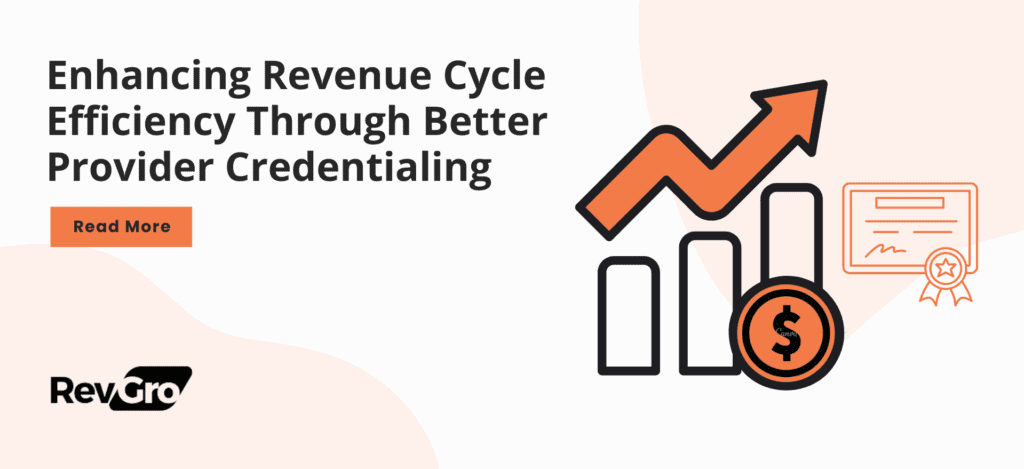
Enhancing Revenue Cycle Efficiency Through Better Provider Credentialing
Table of Contents
In the world of healthcare, the smooth operation of medical practices hinges on several critical processes behind the scenes. One of these key processes is provider credentialing. It’s a complex but vital task that ensures healthcare providers are properly vetted and qualified to deliver care. This not only upholds high standards of healthcare delivery but also plays a significant role in the financial well-being of healthcare organizations. Let’s explore how fine-tuning this process can significantly enhance the efficiency of healthcare operations and positively impact the revenue cycle.
Imagine a pilot performing a pre-flight check before takeoff; similarly, provider credentialing is the process through which healthcare facilities verify the qualifications of their healthcare providers. This includes confirming their education, training, licensure, and professional experience. This verification is crucial for compliance with healthcare regulations and for meeting the standards set by insurance companies.
Credentialing ensures that healthcare providers are legally and professionally suitable to provide care and submit insurance claims. This helps healthcare organizations avoid legal issues, penalties, or disruptions in financial operations. An efficient credentialing process reduces billing errors and denied claims, leading to a smoother financial operation.
Consider what happens when credentialing isn’t handled correctly: claims for patient care provided by inadequately credentialed doctors are likely to be rejected by insurance companies. This results in delayed payments and increases the workload for billing departments, leading to additional administrative costs and potential revenue losses.
For example, a healthcare facility might experience financial difficulties if delays in credentialing lead to a series of claim denials. This can result in significant revenue losses and necessitate extensive efforts to correct the credentialing errors. The close relationship between effective credentialing and the financial health of a healthcare organization cannot be overstated.
Enhancing the credentialing process requires strategic action and attention to detail. Here are several strategies that can help streamline this essential operation:
- Standardize Credentialing Procedures: Creating standardized protocols can reduce errors and increase efficiency. Implementing checklists, templates, and clearly documented processes can help staff manage credentialing tasks more effectively.
- Leverage Technology: Utilizing software specifically designed for credentialing can automate and simplify many of the routine tasks involved in the process. This technology can help track document expirations, send reminders, and maintain up-to-date records with insurance providers, significantly speeding up the process and reducing human error.
- Ongoing Training for Credentialing Teams: Continuous education for credentialing staff on the latest regulations, insurance requirements, and best practices is crucial. Well-informed employees are less likely to make errors that could lead to denied claims.
- Enhance Communication with Providers: Maintaining open lines of communication with healthcare providers ensures that necessary documents and information are submitted promptly. Addressing any discrepancies early in the credentialing process can prevent delays and avoid the expenses associated with claim denials.
- Implement Quality Control Measures: Regular audits and quality assessments can identify areas for improvement in the credentialing process. These measures ensure that tasks are carried out correctly and efficiently, maintaining the integrity of the process.

To evaluate the effectiveness of improvements in the credentialing process, healthcare organizations should monitor specific key performance indicators (KPIs):
- Credentialing Turnaround Time: This KPI measures the duration required to complete the credentialing of a provider. Shorter times generally indicate a more efficient process.
- Denial Rates Due to Credentialing Errors: This metric helps identify how often credentialing mistakes lead to denied claims, offering insights into the accuracy of the credentialing process.
- Time to Revenue Recovery: This indicator tracks the speed with which revenue lost due to credentialing-related denials is recouped. Faster recovery times suggest more effective credentialing practices.
- Compliance Audit Results: Regular compliance reviews can ensure that the credentialing process adheres to all applicable standards and regulations, providing opportunities to refine and enhance the procedure.
Optimizing the provider credentialing process is essential for maintaining efficient operations and robust financial health in healthcare organizations. By adopting standardized procedures, embracing technological solutions, and continually monitoring performance, healthcare facilities can minimize errors, expedite payments, and ensure compliance. These efforts not only support the revenue cycle but also contribute to the overall stability and success of healthcare practices. Investing in improved credentialing processes is indeed a prudent choice for any healthcare organization looking to enhance its operational and financial performance
